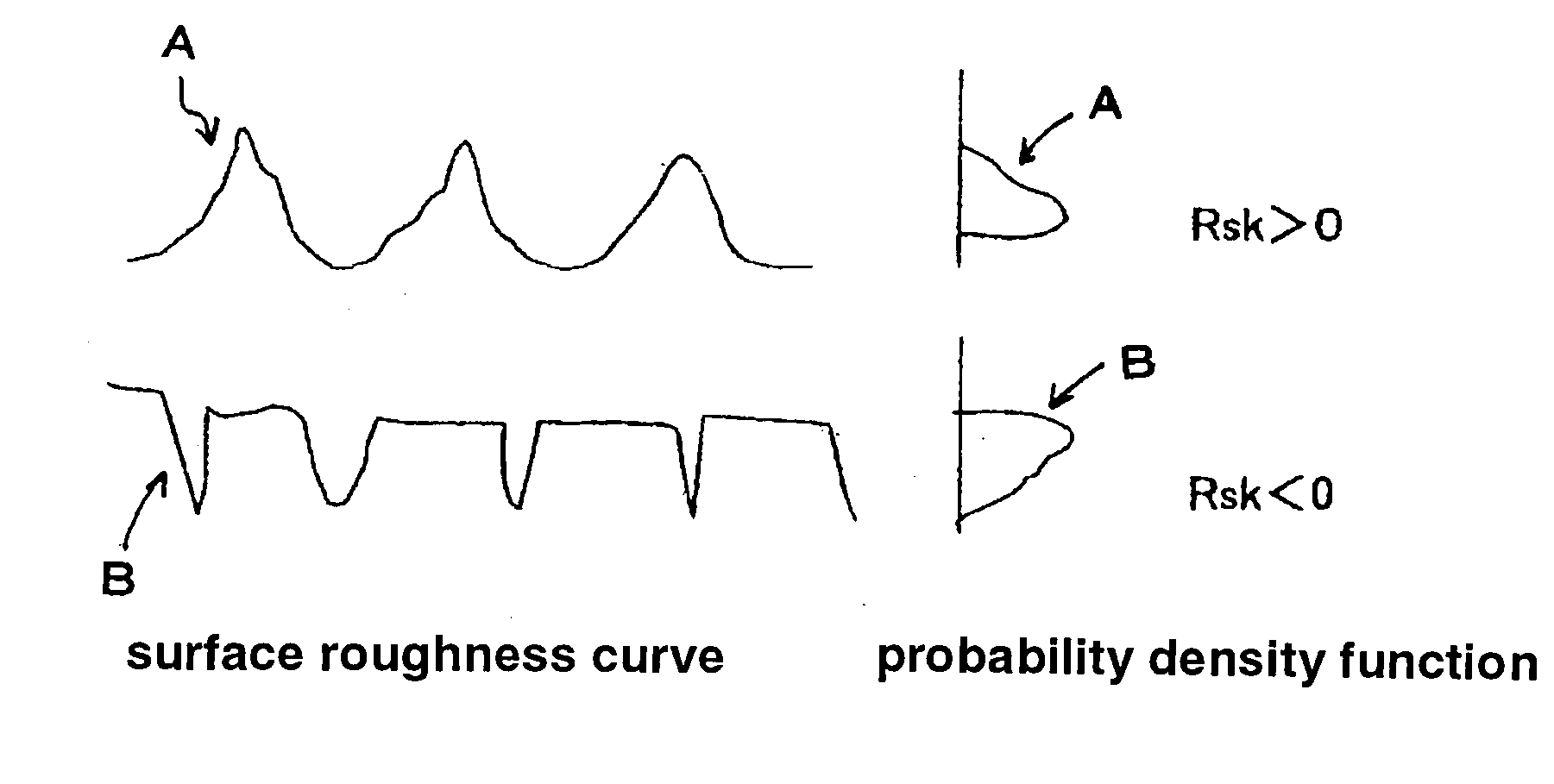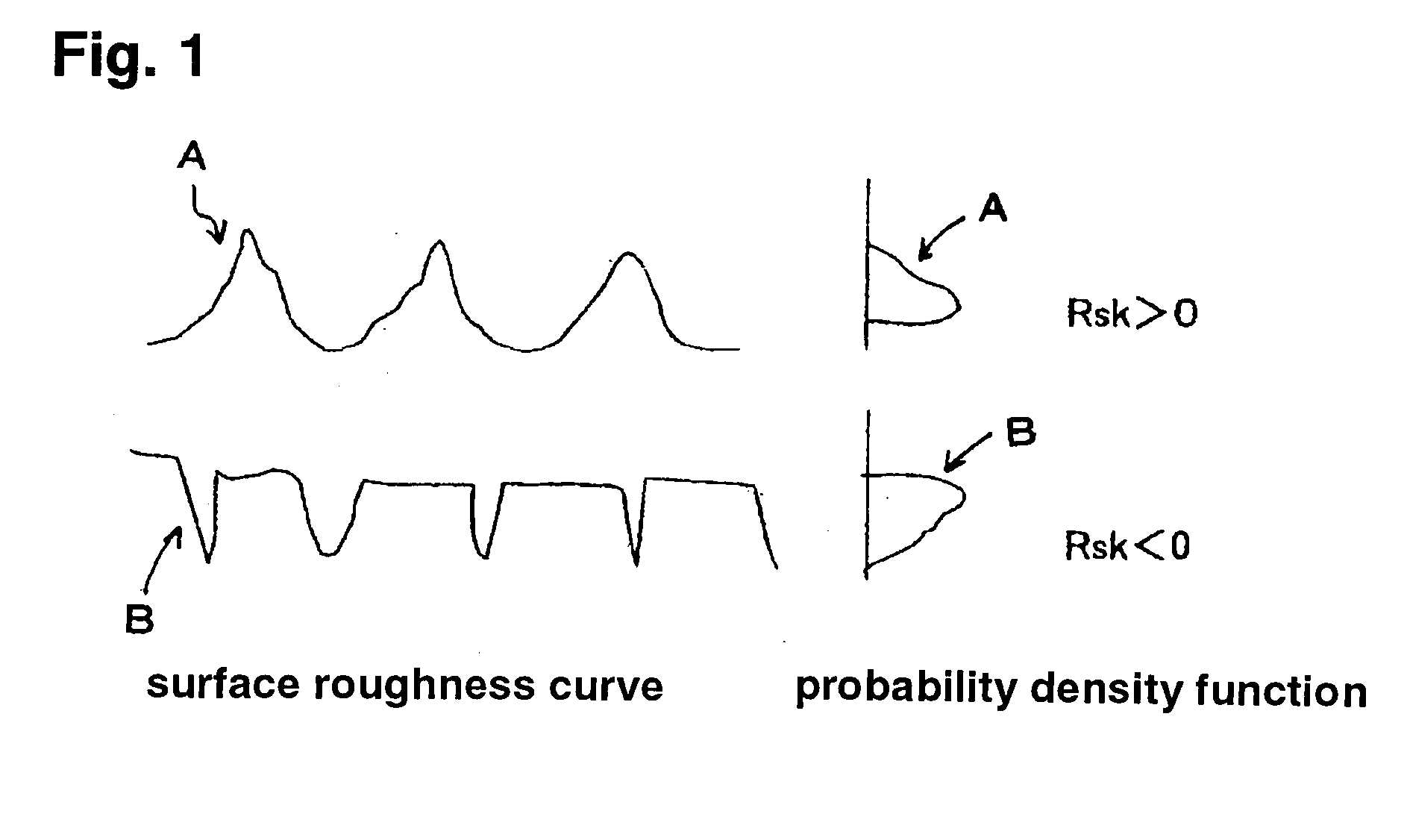Negative electrode material for nonaqueous secondary cells, negative electrode for nonaqueous secondary cells, and nonaqueous secondary cell
a secondary cell and negative electrode technology, applied in the field of negative electrode material for nonaqueous secondary cells, can solve the problems of short circuit of two electrodes, deterioration of cycle performance, and deterioration of high-rate charging/discharging characteristics, etc., to achieve excellent cycle performance, small charging/discharging irreversible capacity, excellent high-rate charging/discharging characteristics
- Summary
- Abstract
- Description
- Claims
- Application Information
AI Technical Summary
Benefits of technology
Problems solved by technology
Method used
Image
Examples
example 1
[0168]An amorphous carbon material (needle coke) was subjected to coarse crushing, and was further pulverized with a fine grinding mill (“Sample Mill” produced by Hosokawa Micron Corporation). Coarse particles were removed with a sieve having an opening of 45 μm, so that carbonaceous particles having a median diameter of 12.2 μm, a minimum particle size of 1.5 μm, a maximum particle size of 68 μm, and an average circularity of 0.80 were produced.
[0169]The resulting carbonaceous particles and a binder pitch having a softening point of 88° C. were mixed in a weight ratio of 100:34. The resulting mixture was put into a kneader having a masticator type agitating blade heated to 128° C. in advance and kneading was performed for 20 minutes.
[0170]The kneaded product, which had been kneaded adequately, was filled in a mold of a mold pressing machine preheated to 108° C. in advance, and was stood for 5 minutes. After the temperature of the kneaded product was stabilized, a plunger was pushed...
example 2
[0184]An amorphous carbon material containing less than 0.1 percent by weight of volatile matter was subjected to coarse crushing, and was further pulverized with a fine grinding mill (“Sample Mill” produced by Hosokawa Micron Corporation). Coarse particles were removed with a sieve having an opening of 45 μm, so that carbonaceous particles having a median diameter of 9.0 μm, a minimum particle size of 0.6 μm, a maximum particle size of 51.5 μm, and an average circularity of 0.80 were produced.
[0185]The resulting carbonaceous particles and a binder pitch having a softening point of 88° C. were mixed in a weight ratio of 100:34, and 30 parts by weight of graphitization catalyst (Fe2O3) was added relative to 100 parts by weight of the mixture. The resulting mixture was put into a kneader having a masticator type agitating blade heated to 128° C. in advance and kneading was performed for 20 minutes. In a manner similar to that in Example 1, molding, removal of VM, graphitization, pulve...
example 3
[0188]Natural graphite having a median diameter of 13.7 μm, a minimum particle size of 5.1 μm, and a maximum particle size of 51.5 μm and a binder pitch having a softening point of 88° C. were mixed in a weight ratio of 100:30. The resulting mixture was put into a kneader having a masticator type agitating blade heated to 128° C. in advance and kneading was performed for 20 minutes.
[0189]The kneaded product, which had been kneaded adequately, was filled in a mold of a mold pressing machine preheated to 108° C. in advance, and was stood for 5 minutes. After the temperature of the kneaded product was stabilized, a plunger was pushed, and molding was performed by applying a pressure of 5 kgf / cm2 (0.20 MPa). This pressure was maintained for 1 minute, and the movement was stopped. After the pressure reduction was completed, a molded product was taken out.
[0190]The resulting molded product was put into a metal saggar, which was a heat-resistant container, and gaps were filled with graphit...
PUM
| Property | Measurement | Unit |
|---|---|---|
| median diameter | aaaaa | aaaaa |
| median diameter | aaaaa | aaaaa |
| length | aaaaa | aaaaa |
Abstract
Description
Claims
Application Information
 Login to View More
Login to View More - R&D
- Intellectual Property
- Life Sciences
- Materials
- Tech Scout
- Unparalleled Data Quality
- Higher Quality Content
- 60% Fewer Hallucinations
Browse by: Latest US Patents, China's latest patents, Technical Efficacy Thesaurus, Application Domain, Technology Topic, Popular Technical Reports.
© 2025 PatSnap. All rights reserved.Legal|Privacy policy|Modern Slavery Act Transparency Statement|Sitemap|About US| Contact US: help@patsnap.com


